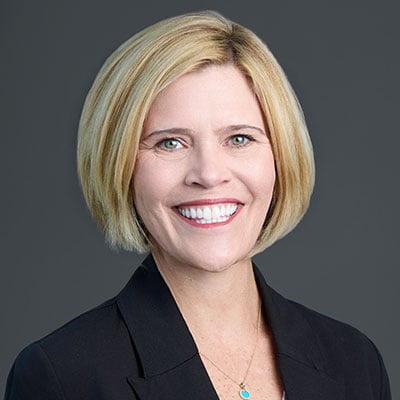#Relatable: Building Trial Teams That Appeal to Jurors
Kim Bueno and Kristen Fournier discussed how law firms and their clients approach putting together a trial team and the importance of giving the jury someone to relate to in this article for The Am Law Litigation Daily.
Elliot Peters, a partner at San Francisco’s Keker, Van Nest & Peters, admits that he is usually the last person among his trial co-counsel that a jury is likely to find relatable.
Peters is the team leader and most senior lawyer on the majority of the cases he tries. Conversely, Peters said, most jurors are not the bosses where they work.
So when jurors are watching a trial, Peters contended, they appreciate seeing other members of the legal team in action. Peters said that is one reason Keker Van Nest seeks to provide its younger attorneys with numerous opportunities to actively participate in trials.
“You really want a diverse team in terms of seniority and experience level, in terms of gender … juries come from all over the place," Peters asserted.
Peters said a diverse team brings a broader range of perspectives to a case and is more relatable to juries.
Law firms and their clients hold a range of sometimes-differing philosophies about how to best win over a jury. And some of those approaches shake up the traditional dynamics of a trial team.
“We’re seeing more and more thought given to what it means to be first chair in some cases,” said Kim Bueno, an Austin-based litigation partner at Kirkland & Ellis.
Bueno said the client’s perception of who is first chair is not always the same as the jury’s perception of who is first chair. While a senior lawyer may be running the show outside the courtroom, she said, someone else may be doing most of the speaking at trial. According to Bueno, that strategy can be effective in cases involving young, diverse juries.
New Jersey-based Seeger Weiss partner Parvin Aminolroaya said it is important that jurors can see themselves reflected in the trial teams they are watching. Various kinds of diversity among the presenting lawyers, including diverse experience levels, can help achieve that, she said.
However, while Aminolroaya said diversity is important, she added that it is not the determining factor in whether or not a jury finds a legal team convincing. “It’s something we should continue to strive for,” she asserted. But, she added, “whether it affects the bottom line, it’s more important that the litigator is relatable, is reasonable as an individual rather than any particular background."
Aminolroaya contended that jurors have a difficult time trusting attorneys who do not come across as reasonable and likable.
Kristen Fournier, a litigation partner in Kirkland’s New York office, said today’s jury pools come from diverse backgrounds, and “we need to be able to put people in front of them that they relate to and speak their language.”
That does not necessarily mean that jurors are looking for trial counsel who look exactly like them, Fournier said. Rather, jurors respond best when the case is presented in a way they can understand.
“At the end of the day, a significant part of these trials is about the credibility of the two legal teams who are going back and forth throughout,” Fournier posited. While the evidence and the law are certainly important to a case, she said, “You have to find lawyers who the jurors find to be credible. Who speak in a way they find accessible."
However, other attorneys place less emphasis on demographics.
“There’s a bit of a myth or a misconception that you have to fit a certain mold in order to connect with a jury,” said Kimberly Branscome, Los-Angeles-based co-chair of the products liability and mass torts practice group at Paul, Weiss, Rifkind, Wharton & Garrison. What’s more important in reaching a jury, Branscome said, is the lawyers’ personality and skill sets. “People who connect with juries are genuine and empathetic,” she said.
Jason Itkin, founding partner of Texas-based plaintiffs firm Arnold & Itkin, asserted that corporate defendants often lend too much weight to the importance of giving the jury someone to relate to, when in reality, jurors care most about the case at hand and who is telling the truth.
“Having somebody down there to do an ‘aw shucks’ routine or say, ‘I’m from this town’ or ‘I’m from that town,’ the jury gets past that pretty quick,” Itkin said. “The defense thinks that that matters, and I just don’t think it does.”
The Optics of Numbers
The legal teams in high-stakes cases can be sprawling, but not every lawyer on a case ends up playing a visible role at trial.
How large a trial team is depends in part on logistical factors such as the length and complexity of the trial. However, there are also optical considerations that factor into determining how many attorneys will interact with the jury.
While employing a fleet of attorneys in a dispute between large companies may be effective, doing so is a riskier choice for a corporate defendant facing off against an individual personal injury plaintiff.
For instance, Keker Van Nest’s Peters, who handles commercial and white-collar criminal cases, said his firm typically takes a “team approach” to trials, where most of the lawyers involved in the case appear in court.
Conversely, Kirkland’s Fournier, who focuses on mass torts and products liability litigation, said she typically staffs trials with one or two lawyers who do most of the talking, though the full team working on the case is much larger than that. Fournier cautioned that corporate defendants in high-stakes personal injury cases must be conscientious of how the jury perceives heavily staffed legal teams in cases involving individual plaintiffs.
Still, Fournier contended that defendants in high-stakes personal injury cases have a bit more flexibility when it comes to more lawyers being visible in the courtroom. Fournier asserted that plaintiffs’ legal teams are often just as large as their opponents’, but unlike corporate defendants, plaintiffs prefer to keep the bulk of their teams in the background in order to appear “almost like a mom-and-pop shop.”
However, the dynamic changes from case to case.
Branscome recalled working on a three-month trial where, she estimated, eight different plaintiffs' lawyers handled the case on rotation. Meanwhile, she said, she and her two co-counsel were in court nearly every day of the trial.
“I’m a big believer in continuity in front of a jury,” Branscome said. She added that it is important, particularly in longer trials involving significant time commitments, for jurors to understand that the lawyers are sticking with them throughout the proceedings.
“When I build a trial team,” Branscome said, “the jury is going to see that team consistently."


